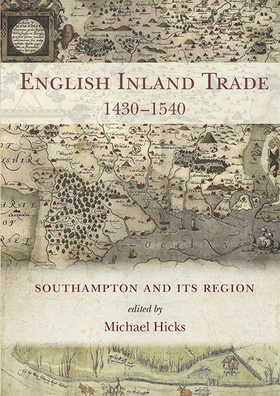
Lägg till önskelistan
English Inland Trade e-bok
Pris
115 kr
The Southampton brokage books are the best source for English inland trade before modern times. Internal trade always matched overseas trade. Between 1430 and 1540 the brokage series records all departures through Southampton’s Bargate, the owner, carter, commodity, quantity, destination and date, and many deliveries too. Twelve such years make up the database that illuminates Southampton’s trade with its extensive region at the time when the city was at its most important as the ...
E-Bok
115 kr
Pris
Förlag
Oxbow Books
Utgiven
23 Augusti 2021
Längd
184 sidor
Genrer
Historia & Arkeologi, Fackböcker
Språk
English
Format
epub
Kopieringsskydd
Vattenmärkt
ISBN
9781782978251
The Southampton brokage books are the best source for English inland trade before modern times. Internal trade always matched overseas trade. Between 1430 and 1540 the brokage series records all departures through Southampton’s Bargate, the owner, carter, commodity, quantity, destination and date, and many deliveries too. Twelve such years make up the database that illuminates Southampton’s trade with its extensive region at the time when the city was at its most important as the principal point of access to England for the exotic spices and dyestuffs imported by the Genoese. If Southampton’s international traffic was particularly important, the town’s commerce was representative also of the commonplace trade that occurred throughout England. Seventeen papers investigate Southampton’s interaction with Salisbury, London, Winchester, and many other places, long-term trends and short-term fluctuations. The rise and decline of the Italian trade, the dominance of Salisbury and emergence of Jack of Newbury, the recycling of wealth and metals from the dissolved monasteries all feature here. Underpinning the book are 32 computer-generated maps and numerous tables, charts, and graphs, with guidance provided as to how best to exploit and extend this remarkable resource.
An accompanying web-mounted database (http://www.overlandtrade.org) enables the changing commerce to be mapped and visualised through maps and trade to be tracked week by week and over a century. Together the book and database provide a unique resource for Southampton, its trading partners, traders and carters, freight traffic and the genealogies of the middling sort.




